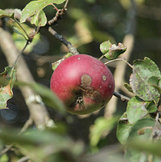Redefining Local
Posted: July 31, 2013
Categories: Food in the News / GoodFoodBites / News from Sustain Ontario / Research
On May 10 of this year, the Canadian Food Inspection Agency greatly expanded its definition of local food.
Historically, the CFIA has defined local food as food produced within 50kms of where it’s sold. The new interim policy, however, has expanded that definition to include food produced within the province in which it is sold, or within 50kms of the province of origin.
Given this monumental change in policy, we here at Sustain Ontario would like to stimulate an in depth discussion with our member organizations regarding this issue. Let’s take a look at some specific subtopics.
The Word
CFIA’s interim policy highlights the ambiguous nature of defining something as “local”. Is it simply a geographical definition, or something more? Many of our food system leaders would argue for a more normative definition of ‘local’, inclusive of notions of environmental sustainability, shortened supply chains and food justice. Our friends over at Food Secure Canada discussed this issue recently in a wonderful article by Abra Brynne. In it, Brynne concedes that while this is an important dialogue to have, the legal definition of ‘local’ can never wholly incorporate the multitude of factors that will contribute to a more sustainable food system.
With the ongoing debate seemingly constrained by geographical considerations, are we losing focus on the larger picture, that of promoting sustainable food systems? Does this definitional divide risk leaving related issues – sustainability, justice, economy – lost in translation?
Why The Change
According to the CFIA, the change in policy is part of an ongoing labeling modernization program. The old definition was “outdated” and did not “reflect current food production practices.” In an interview with The Tyee, manager of consumer affairs Rola Yehia claimed the change came about in response to advice from its consumer round table.
It also important to note that this sudden interim policy came about after the Ontario Liberals tabled the Local Food Act (now in Second Reading), which adopts a province wide definition of local. Could the CFIA adopted the interim policy in order to avoid intergovernmental conflict?
Can One Size Fit All?
At 1,076, 395 square kilometres, Ontario is Canada’s second largest province. At 5,660 square kilometres, Prince Edward Island is Canada’s smallest. Can one federal definition fit the unique needs of both?
The immediate reaction to the policy highlights this problem. In two separate articles, the CBC captured how farmers welcomed or opposed the decision. Some producers, after all, do not live within fifty kilometres of any sizeable market and would benefit from this redefinition. Others claim, however, that it both confuses consumers and dilutes whatever capital the term “local” may carry.
Are these the inevitable problems of any federal legislation or is a more nuanced, flexible response possible? Considering Ontario’s current efforts to establish a provincial definition of local food, should Ottawa leave these sorts of regulations to the provinces?
How Local Is Defined Elsewhere
This issue, of course, is not unique to Canada. How then do other countries define local food? In the US, a similarly broad definition exists. According to the 2008 Food, Conservation and Energy Act, a product must be sold either within the state in which it was produced or within 400 miles from its origin to be considered local. For more information on the US experience, follow this link.
In England, no legal designation exists. However, many large retail chains have adopted a voluntary model that defines a product as local if sold within 30 miles of its place of origin. Exceptions are made for some larger cities or coastal communities, with the maximum allowable distance being 100 miles. For more information of the English experience, follow this link.
What can Canada learn from these other jurisdictions? Do they provide useful models for consideration?
The Consultation Process
In order to inform future decisions on the matter, CFIA has launched an online consultation process. We encourage all of our members to take part in this important process. The process ends August 30th, 2013.
CFIA’s Food Labelling Discussion Paper
CFIA Online Consultation Questionnaire
– Matthew Landry, Sustain Ontario

